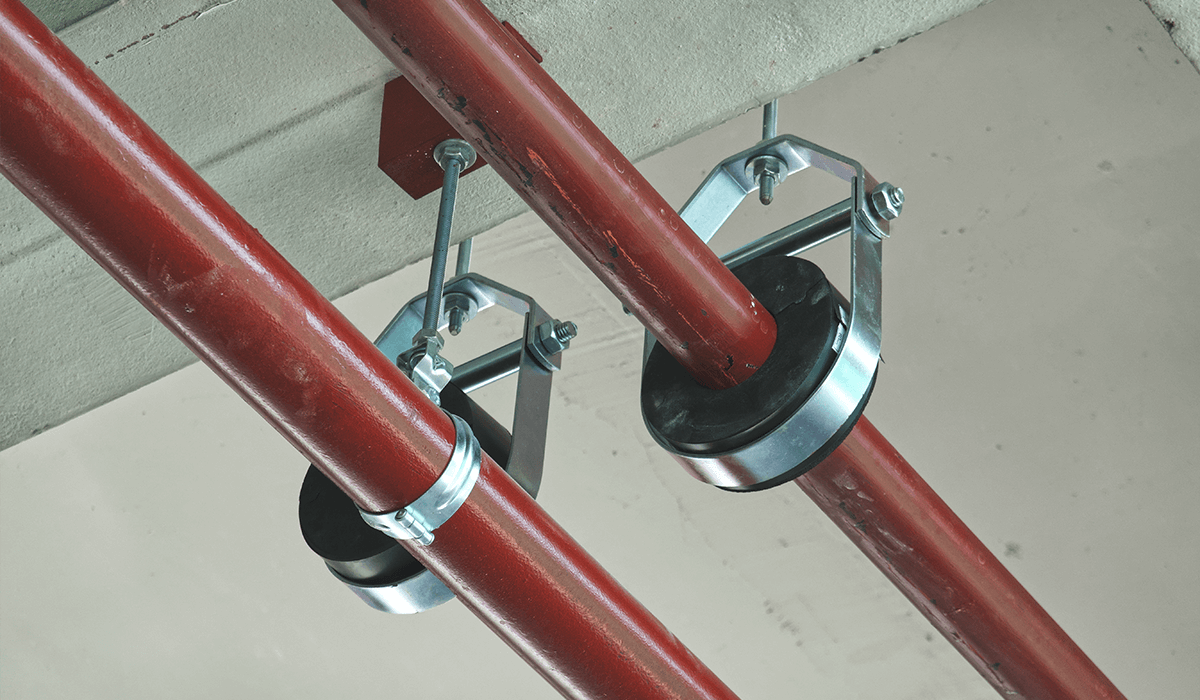
Proper insulation keeps components and systems working effectively over time and mitigates risks everywhere, from inside your walls to within your ductwork. Chilled water systems need adequate insulation, too, protecting them so they can effectively execute cooling functions.
We recently partnered with Owens Corning on a webinar to dive into the topic of chilled water system insulation. Read on to learn about chilled water systems and what matters most when it comes to insulating them.
What Is a Chilled Water System?
Chilled water systems are used in commercial buildings and manufacturing facilities. They operate below ambient temperatures, helping facilities meet their unique cooling needs.
So, how do they work? Chilled water systems remove heat from buildings by transferring it from the air and into cold water through piping. In a complex and continuous process, water circulates through chilled water loops, absorbs the heat from the air, and returns heated water to the chiller for refrigerant to rechill it.
Every system requires insulation to protect its pipes against moisture, condensation and heat gain. Common insulation solutions include fiberglass, polyurethane or phenolic foam, but regardless of your material of choice, insulating the system can be difficult.
Challenges in Insulating Chilled Water Systems
Just because chilled water lines are vital to HVAC systems doesn’t mean they are perfect. Insulating chilled water systems presents unique challenges.
Reliance on Vapor Barrier
Some insulation for chilled water systems demands too much from the vapor barrier. Such is the case with permeable insulation, which relies only on external vapor barriers to keep vapor out of the system.
If this barrier is compromised, permeable insulation could allow water to move toward the cold pipe, where it could condense around the surface. That moisture may get absorbed into the insulation, damaging your K value.
Unseen Hazards
Operating chilled water systems can lead to issues that go undiagnosed for long periods of time without the right insulation in place. Some of the biggest include:
- Slip-and-fall hazards from dripping water
- Health hazards from mold and mildew
- Damaged pipes from corrosion under insulation
Considerations for Insulation Materials
Deploying the right insulation materials for chilled water systems is not quite a science to control condensation — it’s more like an art form. To do it effectively, you have to consider three core factors: humidity, vapor pressure and dew point.
1. Humidity
Condensation is a higher risk in humid environments. That is because these conditions produce a much higher vapor drive, resulting in different vapor pressures.
Both indoor- and outdoor-specific complications contribute to increased humidity.
Indoor complications
Humidity can become a problem specifically indoors. If the integrity of the building envelope is less than ideal, you must account for non-conditioned, high-humidity air coming into contact with the chilled water system.
The problem is “idle-building syndrome” which happens when a building is unoccupied and air handlers and/or HVAC systems get shut down, while chillers and chiller pipes remain operational. With one piece of the system sitting idle, the unconditioned space and high-humidity air combine to create condensation.
Outdoor complications
Outdoor applications come with their own challenges. The key to mitigating these is summarized in one word: resistance. Outdoor conditions can be unpredictable, so your insulation system needs to adapt to anything. Any materials exposed to direct sunlight need to have UV resistance, while you also need to take into consideration seasonal extremes in temperature and humidity. Is there a risk of chemical exposure? The system must be resistant to avoid damage.
2. Vapor Pressure
Vapor drive — moisture moving from warm air to the cold surface of a chilled water pipe — is normal, but it can become problematic. If enough moisture moves toward the cold pipe, this could produce condensation. This happens if your insulation is compromised due to poor installation and/or physical damage.
3. Dew Point
Ensure condensation control within the insulation system by remembering your dew point. The insulation surface temperature must be greater than the dew point. Jacket emissivity plays a major role in balancing temperature and dew point.
Jacket emissivity
Emissivity is the relative effectiveness of a surface to emit heat by radiation. Various materials conduct heat differently. For chilled water systems in warm environments, high emissivity jacketing, such as PVC or ASJ, absorb more heat. This creates a higher surface temperature compared to its dew point, limiting condensation.
Insulate Your Chilled Water Systems Effectively
Designing and implementing the right insulation solution for your chilled water system means taking the bad with the good and meeting in the middle. Be mindful of various challenges along the way, and make your selection based on the aspects that will best control condensation in the system: humidity, vapor pressure and dew point.
Looking for more expert insights? Watch our full “Design Considerations for Installing Chilled Water Insulation” webinar with Owens Corning, and explore Distribution International’s other informative articles.
